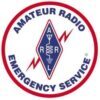KNW-140
Choosing a Radio for
Emergency Communications
Adapted and modified 12/2020 for the Gulf Coast area by Earl Pack, AE5PA.
Base material from an 11/15/2008 article by “Disaster Radio in Hawaii”.
Used with permission of Disaster Radio in Hawaii.
This article offers criteria for choosing a radio for emergency communications. The most likely scenario for emergency communications is a ham radio operator stationed at a fixed site such as a supply point, community shelter or served agency location. The operator could be inside a building, possibly surrounded by other buildings and with or without commercial power. They will be in contact with a net control station (ncs) via either a repeater or simplex. So, what equipment do you need?
A Radio with:
• A band to match net control’s frequency band; better yet a dual-bander.
• Enough power to communicate via simplex, if need be.
• A low power setting to conserve electrical power, such as from a battery.
• Continuous Tone-Coded Squelch System (CTCSS) capability to match the repeater, if need be.
• Small enough to be easily transported by hand. A reasonable choice is a dual band mobile VHF/UHF 2M/70cm radio – HT or mobile.
A Power source:
If commercial power is available:
- An AC power supply
- Preferably a switching power supply for light weight
- A 25 or 50 feet extension cord (the outlet is always across the room)
- A power strip (someone will always want the outlet and unplug you)
Options if no commercial power is available:
- A small, portable generator with sufficient fuel for at least two days
- One or more batteries – three is two, two is one and one is none.
- Lithium batteries, while costing up to 50% more than other maintenance free batteries, are good for many thousands more duty cycles, can be discharged to a lower point and deliver constant voltage level during a cycle. Deep cycle batteries are preferred to provide extended power between charges.
- Only maintenance free batteries should be used.
- An option to Lithium batteries are the older, deep cycle Gel-cell batteries which offer a better price point but are significantly less capable.
NOTES: - Solar charging is a cost effective option for extended operations IFF the weather cooperates. Sufficient batteries to weather the storm are required.
- Power cords/extension cords with connectors or jumpers to match the radio.
- Enough amp-hour capacity to last several days – TEST YOUR MOBILE SHACK!
An Antenna:
- Quarter-wave or longer…3/8 or better is preferred.
- Vertical with minimum radials
- A good choice is a 1/2 or 5/8 wave mobile dual band vertical with a radial kit or a twin-line J-pole which requires no radials are good choices. A base station, 1/2 wave or longer antenna on a push-up pole is another option.
One or more mounts:
- Magnetic mount – attach to any steel surface, car, refrigerator top, file cabinet, steel beam, baking pan, etc. (Some new vehicles have non-ferrous skins; a different mount, like suction cups, might be needed).
- L-shaped clamp – attach to railing, post, tree stump, etc.
- U-clamp – attach to push up poles, Schedule 40 PVC poles, etc.
At least 50 feet, 100 feet is better, of RG8 coax cable for low loss, RG8X as best compromise for weight and bulk.
PL259 connectors on coax
SO239 barrels to interconnect coaxes
Miscellaneous:
Headphones with full ear muffs – it can get extremely noisy in an operational area. Noise cancelling ‘shooter’s ears’ with external audio jacks are best for high noise environments. I like to wear a single ear headphone/mike under my noise cancelling shooter’s ears so I can completely cut out external sounds with the twist of a knob.
Other usual supplies for operations, from your 72-hour kit (you DO have one, don’t you?)
Notes and suggestions:
- Standardize all power connectors on your equipment to Anderson Powerpoles.
- Standardize on PL259/SO239 connections for radio, antennas and antenna mounts except HTs. Carry adapter cables for HT work.
- If you use an NMO mount on your car, get an NMO-UHF adapter so you can replace the car antenna with the one described above.
- Make a 10 foot power cord with a standard power connector on one end and large, battery terminal clamps on the other in case you need to draw power from a “commandeered” car battery.
Notes on HandiTalkies:
- Get an alkaline cell adapter for your HT and lots of AA cell batteries.
- Make/buy a power cord for the HT with a standard power connector and alligator clamps at least 6 feet long (12 feet better) for battery use.
- Get an adapter for your HT antenna connection – from BNC or SMA to UHF-SO239.
- Get a linear amplifier (called a “brick”) to boost the 3-5 watts of the HT to 30-40 watts. A dual band amplifier has obvious advantages, but it costs more.
- Ensure the amplifier has standard power connectors (Powerpoles).
- Ensure you have a cable to connect the HT to the amplifier.
Final comment for mobile radio users:
- In an emergency, can you detach your mobile radio from your car and move it into a building in a reasonably short period of time?
- Do you have the appropriate tools in the car to detach the radio?
- Do you have an appropriate power cord to operate from either an AC power supply or 12 VDC battery away from the car?
- Do you have coax and an antenna to operate away from the car?
Test out your capability and time yourself. Especially if you have a remote head mount in the car. Can you re-assemble the radio quickly in the building ready for operation? This is the time to find out…not during the real emergency.
That concludes tonight’s training. Are there any questions, comments or suggested additions to this material?
Thanks, this is (callsign) clear to net control.
